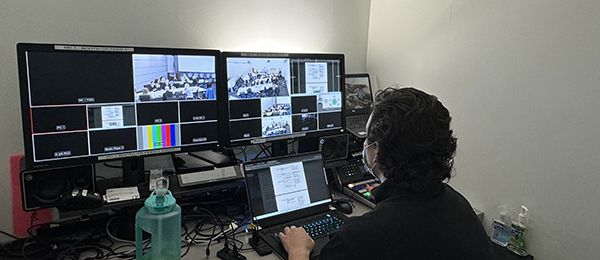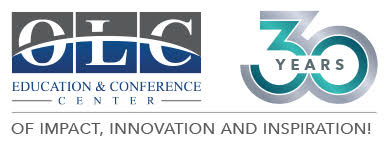
Hybrid and Virtual Events in 2024: What You Need to Know
The event industry isn’t merely keeping pace with the global hunger for AI and innovation – it’s pioneering a future fueled by it. While the pre-pandemic era relied on the power of in-person interaction, the present and future demand a more resilient and inclusive solution: seamless integration of hybrid and virtual events.
This platform-agnostic approach harmonizes the best aspects of both physical and virtual experiences, offering unparalleled flexibility and accessibility. Organizers are thus empowered to reach a global audience, fostering global inclusivity and engagement, all while optimizing costs. It’s not a passing trend, but a paradigm shift with the potential to maximize value, minimize costs, and deliver exceptional ROI.
The key challenge? Maintaining attendee equity, fostering a shared culture, and building genuine connections between virtual and in-person attendees. Mastering this new landscape requires a strategic toolkit. By embracing these crucial elements, events can become “weatherproof”, delivering exceptional value to audiences regardless of their chosen format – physical or virtual.
Hit Event Goals with the Right Technology:
The rise of artificial intelligence, virtual, augmented, and mixed reality (AI, VR, AR, and MR) technologies presents exciting opportunities for event planners. These tools can be employed to:
- Craft Immersive Experiences: VR and AI technology can transport attendees to virtual environments, creating an unparalleled level of engagement for keynotes, product launches, and educational sessions. Imagine showcasing a new medical device or historical landmark through a fully immersive VR experience.
- Facilitate Virtual Tours: AR can overlay digital information onto the physical world, allowing attendees to virtually explore event spaces, exhibitor booths, or even historical sites related to the event theme. This not only enhances accessibility for remote participants but also enriches the overall experience.
- Foster Interactive Networking: MR technology, which blends the real and virtual worlds, can be leveraged to create interactive networking experiences. Attendees can use their devices to access information about other participants, spark conversations, and even participate in gamified networking activities, fostering connections that transcend physical limitations.
- Live Polling & Integrated Feedback Channels: Gathering real-time information allows planners to gauge audience sentiment, identify areas for improvement, and tailor the event accordingly. This is especially crucial when introducing a large or new event format.
Bridge the Virtual and Physical Equity Divide:
Creating a sense of connection, trust, and equity between virtual and in-person attendees is a key challenge in hybrid events. Event planners can bridge this gap through:
- Pre-Event Engagement: Utilizing virtual platforms for icebreakers, networking sessions, or Q&A sessions can foster familiarity and a sense of community among all participants before the event even begins. This helps to break down the initial barriers between virtual and in-person attendees.
- Interactive Elements: Integrating live polls, quizzes, chat features, and breakout rooms with mixed virtual and in-person participation into presentations and workshops keeps virtual attendees actively engaged and invested in the proceedings. This ensures a sense of inclusion and participation for all.
- Dedicated Virtual Event Host: Assigning a dedicated virtual event host to mirror the physical event moderator plays a crucial role. This individual can introduce speakers, answer questions in real-time, and actively engage with the virtual audience, ensuring they feel seen, heard, and valued.
Leverage Key Hidden Benefits:
While virtual elements can offer significant cost savings, the benefits of hybrid and virtual formats extend far beyond the bottom line:
- Seamless Scalability: Hybrid events can easily accommodate last-minute registrations or unexpected surges in attendance without requiring additional physical space. This flexibility allows event planners to cater to unforeseen fluctuations in participant numbers.
- Environmental Sustainability: By reducing travel requirements, hybrid and virtual events contribute to a smaller environmental footprint, aligning with the growing focus on responsible event practices.
- Weather Resilience: Unlike traditional in-person events, hybrid and virtual formats are not susceptible to disruptions caused by adverse weather conditions. This ensures event continuity and eliminates the risk of cancellation due to unforeseen circumstances.
Research & Select the Optimal Venue:
Choosing the right venue is paramount in today’s hybrid event landscape. Venues like the OLC offer the following advantages:
- Flexible Event Spaces: The OLC’s spacious and adaptable event spaces can accommodate diverse event formats, from intimate conferences to large-scale exhibitions. This allows planners to tailor the physical environment to the specific needs of each event.
- State-of-the-Art Tech Infrastructure: High-speed Wi-Fi, robust data security network, integrated audio-visual systems, and hybrid-ready infrastructure are essential for seamless integration of virtual elements. The OLC’s commitment to cutting-edge technology ensures a smooth and reliable experience for both in-person and remote attendees.
- Comprehensive Support Services: A dedicated full-service concierge team at the OLC can alleviate the burden on event planning, logistics management, catering, and on-site support. This allows planners to focus on the creative and strategic aspects of the event, ensuring a successful execution.
By partnering with a venue that prioritizes both physical and virtual functionality, event planners can create a foundation for exceptional hybrid experiences.

